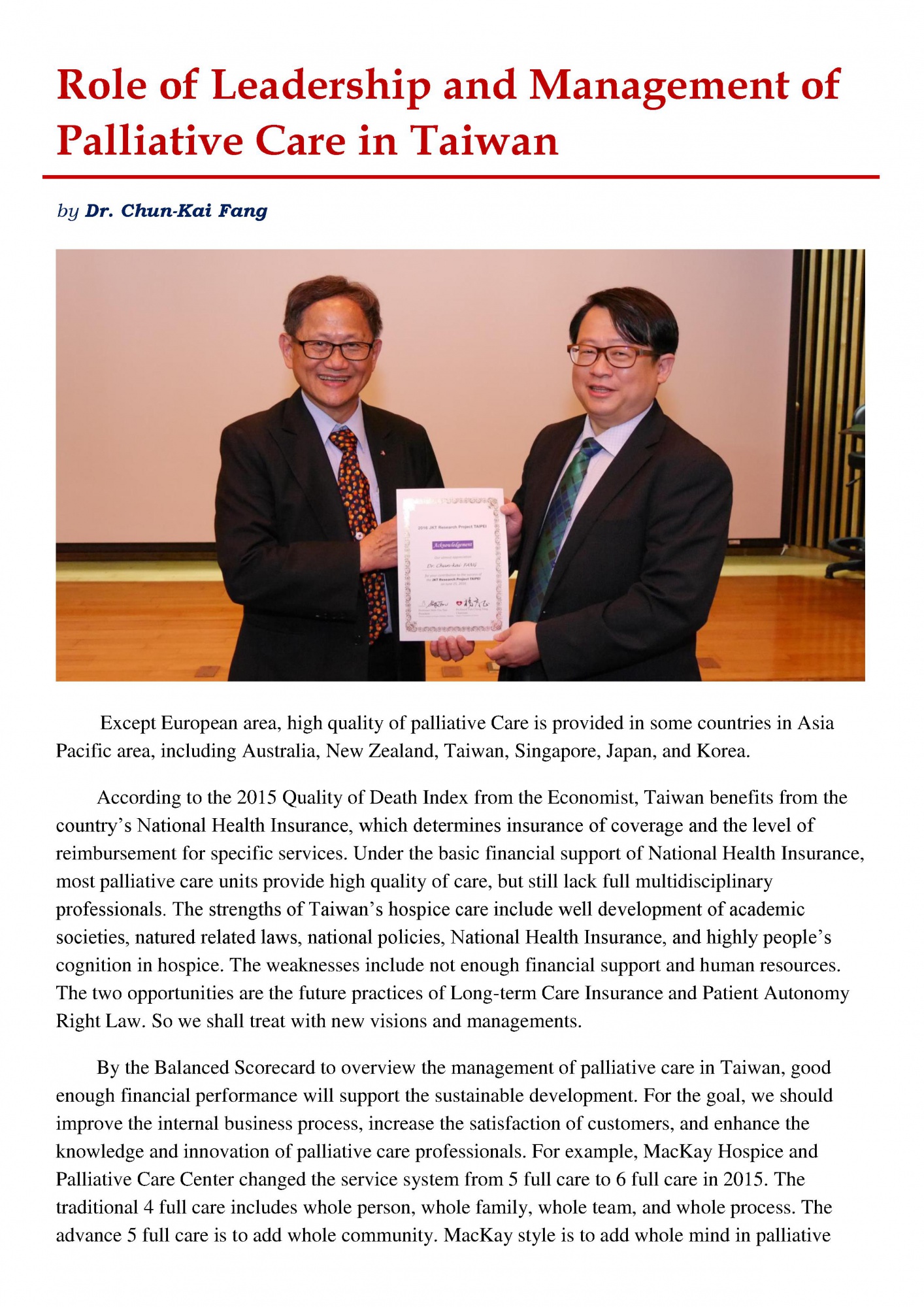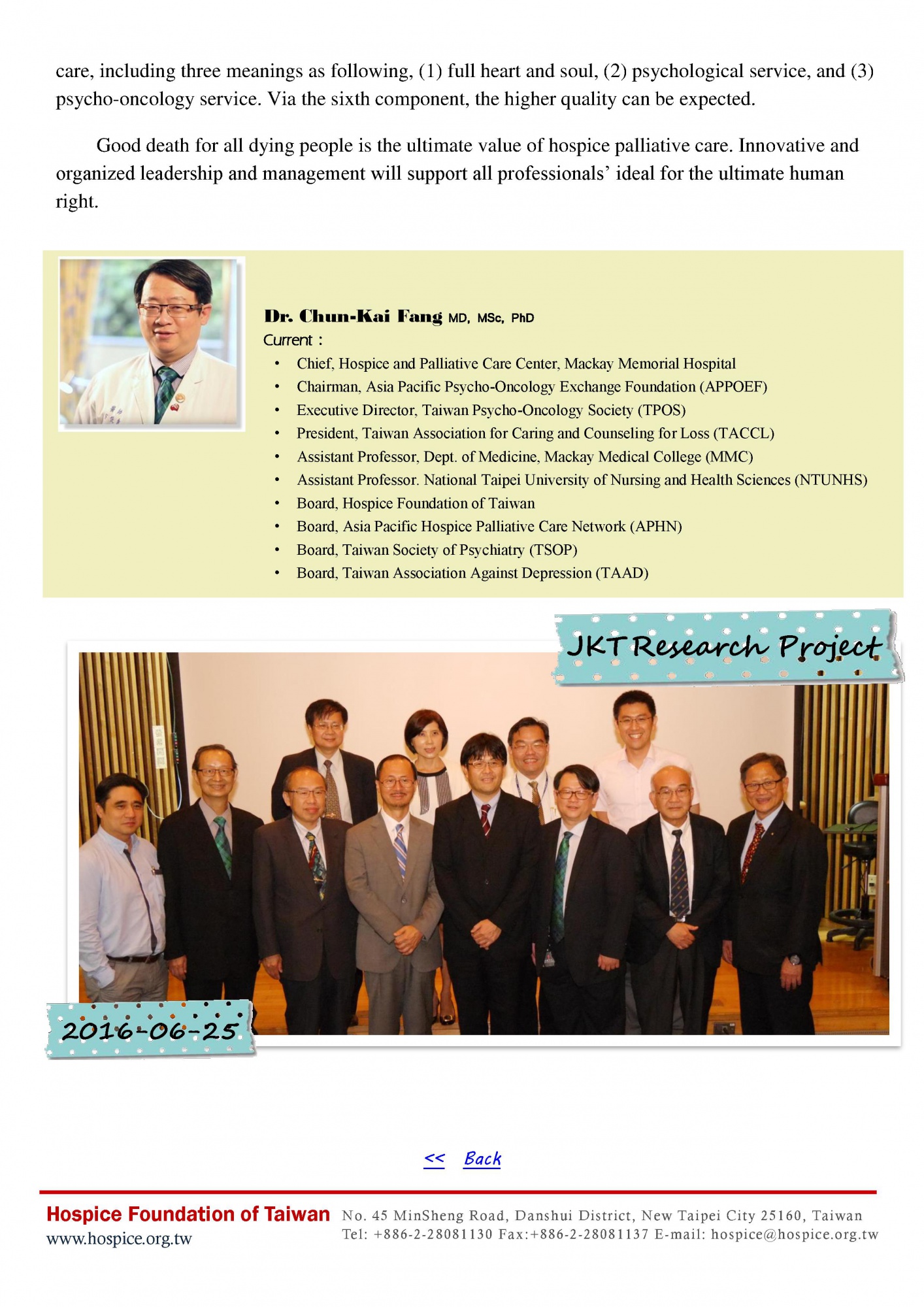Except European area, high quality of palliative Care is provided in some countries in Asia Pacific area, including Australia, New Zealand, Taiwan, Singapore, Japan, and Korea.
According to the 2015 Quality of Death Index from the Economist, Taiwan benefits from the country’s National Health Insurance, which determines insurance of coverage and the level of reimbursement for specific services. Under the basic financial support of National Health Insurance, most palliative care units provide high quality of care, but still lack full multidisciplinary professionals. The strengths of Taiwan’s hospice care include well development of academic societies, natured related laws, national policies, National Health Insurance, and highly people’s cognition in hospice. The weaknesses include not enough financial support and human resources. The two opportunities are the future practices of Long-term Care Insurance and Patient Autonomy Right Law. So we shall treat with new visions and managements.
By the Balanced Scorecard to overview the management of palliative care in Taiwan, good enough financial performance will support the sustainable development. For the goal, we should improve the internal business process, increase the satisfaction of customers, and enhance the knowledge and innovation of palliative care professionals. For example, MacKay Hospice and Palliative Care Center changed the service system from 5 full care to 6 full care in 2015. The traditional 4 full care includes whole person, whole family, whole team, and whole process. The advance 5 full care is to add whole community. MacKay style is to add whole mind in palliative care, including three meanings as following, (1) full heart and soul, (2) psychological service, and (3) psycho-oncology service. Via the sixth component, the higher quality can be expected.


